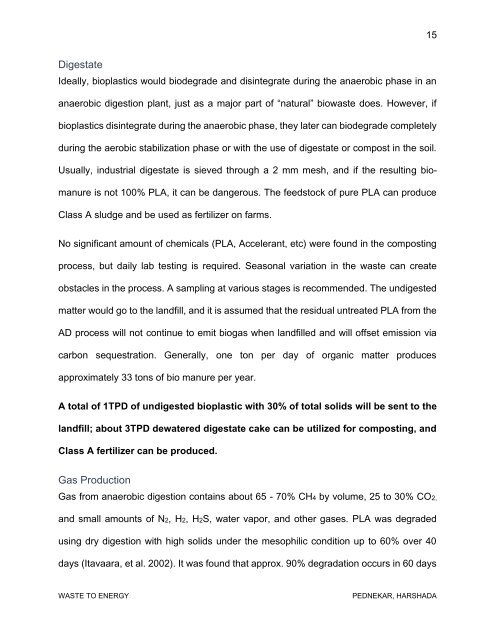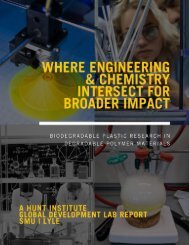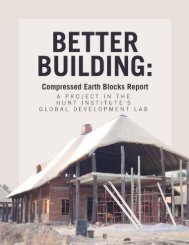Waste to Energy: Harnessing the fuel in organic waste to create a business opportunity for a recycling-based society and system
To generate a feasible amount of methane to support a digester, it is estimated that 10 to 12 tons/d, with 8-10% contamination and 80% of the contamination being bioplastics, can produce about 70 Nm3/h of biogas. This is the amount of biogas needed to produce 200 kg/day of hydrogen, which is the smallest commercially available packaged system. The greenhouse gas emission (GHG) for IngeoTM is currently 1.3 kg CO2 eq./kg polymer compared to approx. 3.2 kg CO2 eq./kg polymer for PET. Therefore, implementing anaerobic digestion for PLA can reduce around 942.5 kg - 1132 kg per day of CO2 equivalent emissions. A total of 1 ton per day of undigested bioplastic with 30% of total solids will be sent to landfills; 3 tons per day of dewatered digestate cake can be utilized for composting, and Class A fertilizer can be produced. The research on anaerobic degradation of biopolymers is still in its infancy. Therefore, this report has discussed different pre-treatment alternatives to treat PLA such as physical, chemical, and thermal treatments. This report suggests on-site segregation benefits of the current solid waste management scenario in the commercial sector of Plano, Texas. Organic waste generated from a cafeteria of the commercial sector in Plano caused an environmental impact on landfills. This report consists of a description of existing scenarios and possible pre-treatment alternatives for bioplastic degradation generated from the commercial sector. Harshada Pednekar was a graduate research analyst in the Hunt Institute while studying for a masters degree in environmental engineering from SMU's Lyle School of Engineering
To generate a feasible amount of methane to support a digester, it is estimated that 10 to 12 tons/d, with 8-10% contamination and 80% of the contamination being bioplastics, can produce about 70 Nm3/h of biogas. This is the amount of biogas needed to produce 200 kg/day of hydrogen, which is the smallest commercially available packaged system. The greenhouse gas emission (GHG) for IngeoTM is currently 1.3 kg CO2 eq./kg polymer compared to approx. 3.2 kg CO2 eq./kg polymer for PET. Therefore, implementing anaerobic digestion for PLA can reduce around 942.5 kg - 1132 kg per day of CO2 equivalent emissions.
A total of 1 ton per day of undigested bioplastic with 30% of total solids will be sent to landfills; 3 tons per day of dewatered digestate cake can be utilized for composting, and Class A fertilizer can be produced. The research on anaerobic degradation of biopolymers is still in its infancy. Therefore, this report has discussed different pre-treatment alternatives to treat PLA such as physical, chemical, and thermal treatments. This report suggests on-site segregation benefits of the current solid waste management scenario in the commercial sector of Plano, Texas. Organic waste generated from a cafeteria of the commercial sector in Plano caused an environmental impact on landfills. This report consists of a description of existing scenarios and possible pre-treatment alternatives for bioplastic degradation generated from the commercial sector.
Harshada Pednekar was a graduate research analyst in the Hunt Institute while studying for a masters degree in environmental engineering from SMU's Lyle School of Engineering
You also want an ePaper? Increase the reach of your titles
YUMPU automatically turns print PDFs into web optimized ePapers that Google loves.
15<br />
Digestate<br />
Ideally, bioplastics would biodegrade <strong>and</strong> dis<strong>in</strong>tegrate dur<strong>in</strong>g <strong>the</strong> anaerobic phase <strong>in</strong> an<br />
anaerobic digestion plant, just as a major part of “natural” bio<strong>waste</strong> does. However, if<br />
bioplastics dis<strong>in</strong>tegrate dur<strong>in</strong>g <strong>the</strong> anaerobic phase, <strong>the</strong>y later can biodegrade completely<br />
dur<strong>in</strong>g <strong>the</strong> aerobic stabilization phase or with <strong>the</strong> use of digestate or compost <strong>in</strong> <strong>the</strong> soil.<br />
Usually, <strong>in</strong>dustrial digestate is sieved through a 2 mm mesh, <strong>and</strong> if <strong>the</strong> result<strong>in</strong>g biomanure<br />
is not 100% PLA, it can be dangerous. The feeds<strong>to</strong>ck of pure PLA can produce<br />
Class A sludge <strong>and</strong> be used as fertilizer on farms.<br />
No significant amount of chemicals (PLA, Accelerant, etc) were found <strong>in</strong> <strong>the</strong> compost<strong>in</strong>g<br />
process, but daily lab test<strong>in</strong>g is required. Seasonal variation <strong>in</strong> <strong>the</strong> <strong>waste</strong> can <strong>create</strong><br />
obstacles <strong>in</strong> <strong>the</strong> process. A sampl<strong>in</strong>g at various stages is recommended. The undigested<br />
matter would go <strong>to</strong> <strong>the</strong> l<strong>and</strong>fill, <strong>and</strong> it is assumed that <strong>the</strong> residual untreated PLA from <strong>the</strong><br />
AD process will not cont<strong>in</strong>ue <strong>to</strong> emit biogas when l<strong>and</strong>filled <strong>and</strong> will offset emission via<br />
carbon sequestration. Generally, one <strong>to</strong>n per day of <strong>organic</strong> matter produces<br />
approximately 33 <strong>to</strong>ns of bio manure per year.<br />
A <strong>to</strong>tal of 1TPD of undigested bioplastic with 30% of <strong>to</strong>tal solids will be sent <strong>to</strong> <strong>the</strong><br />
l<strong>and</strong>fill; about 3TPD dewatered digestate cake can be utilized <strong>for</strong> compost<strong>in</strong>g, <strong>and</strong><br />
Class A fertilizer can be produced.<br />
Gas Production<br />
Gas from anaerobic digestion conta<strong>in</strong>s about 65 - 70% CH4 by volume, 25 <strong>to</strong> 30% CO2,<br />
<strong>and</strong> small amounts of N2, H2, H2S, water vapor, <strong>and</strong> o<strong>the</strong>r gases. PLA was degraded<br />
us<strong>in</strong>g dry digestion with high solids under <strong>the</strong> mesophilic condition up <strong>to</strong> 60% over 40<br />
days (Itavaara, et al. 2002). It was found that approx. 90% degradation occurs <strong>in</strong> 60 days<br />
WASTE TO ENERGY<br />
PEDNEKAR, HARSHADA













